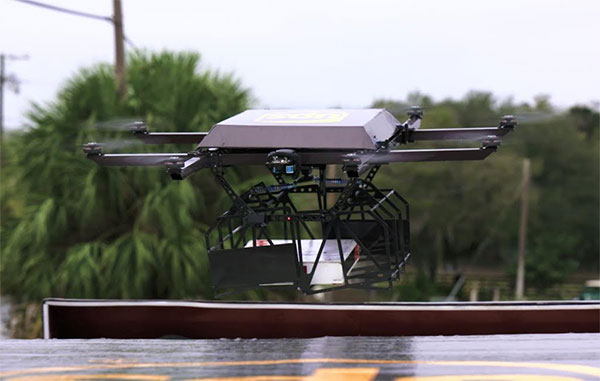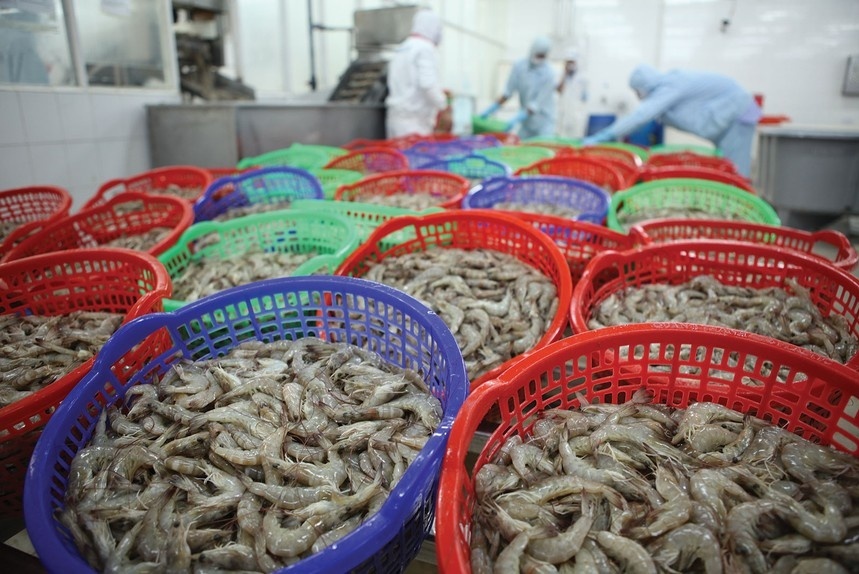UPS tests residential delivery via drone launched from atop package car
 |
UPS conducted the test on Monday in Tampa, Fla. with Workhorse Group, an Ohio-based battery-electric truck and drone developer. Workhorse built the drone and the electric UPS package car used in the test.
“This test is different than anything we’ve done with drones so far. It has implications for future deliveries, especially in rural locations where our package cars often have to travel miles to make a single delivery,” said Mark Wallace, UPS senior vice president of global engineering and sustainability.
“Imagine a triangular delivery route where the stops are miles apart by road. Sending a drone from a package car to make just one of those deliveries can reduce costly miles driven. This is a big step toward bolstering efficiency in our network and reducing our emissions at the same time,” Wallace added.
With ORION, UPS’s On-Road Integrated Optimisation Navigation routing software, a reduction of just one mile per driver per day over one year can save UPS up to $50 million. UPS has about 102,000 delivery drivers on the road each day.
Rural delivery routes are the most expensive to serve due to the time and vehicle expenses required to complete each delivery. In this test, the drone made one delivery while the driver continued down the road to make another. This is a possible role UPS envisions for drones in the future.
“Drivers are the face of our company, and that won’t change,” Wallace said. “What’s exciting is the potential for drones to aid drivers at various points along their routes, helping them save time and deliver on increasing customer service needs that stem from the growth of e-commerce.”
The drone used in Monday’s test was the Workhorse HorseFly™ UAV Delivery system. It is a high-efficiency, octocopter delivery drone that is fully integrated with Workhorse’s line of electric hybrid delivery trucks.
UPS has been testing automation and robotics technologies, including drones, for years. Last September, UPS staged a mock delivery of urgently needed medicine from Beverly, Mass. to an island three miles off the Atlantic coast.
Additionally, UPS is using drones extensively for humanitarian relief, partnering with third-party organisations to deliver life-saving blood and vaccines to hard-to-reach locations in Rwanda. UPS is also utilising drones to check inventory on high storage shelves in its warehouses.
Unlike all of the previous tests, the most recent UPS drone test shows how drones might assist in making non-urgent residential deliveries as part of the day-to-day operation.
Last year, the US Federal Aviation Administration (FAA) issued small unmanned aircraft systems rules that allow for some commercial use of drones and paved the way for future expanded applications.
UPS was one of 35 selected from a cross section of key stakeholders to serve on the FAA’s drone advisory committee.
The committee will provide the FAA recommendations on key drone integration issues that will ultimately allow for safe and secure operations of drones within the National Air Space System.
What the stars mean:
★ Poor ★ ★ Promising ★★★ Good ★★★★ Very good ★★★★★ Exceptional
Latest News
More News
- Vietnamese startup Sky Mavis slashes 21 per cent of workforce (November 27, 2024 | 11:35)
- Vietnam SuperPort drives cross-border e-commerce (November 26, 2024 | 15:06)
- Investors betting on construction steel through 2025 (November 26, 2024 | 13:43)
- LEGO Group seeking hundreds of workers to start operation at Binh Duong factory (November 26, 2024 | 11:22)
- PM orders strengthened state management over e-commerce (November 26, 2024 | 10:18)
- Top 10 reputable pharmaceutical, medical supply companies in 2024 announced (November 26, 2024 | 09:32)
- PM Pham Minh Chinh meets Ericsson CEO (November 26, 2024 | 08:48)
- How Masan employs dealmaking to build its consumer-retail platform (November 25, 2024 | 16:00)
- Kim Oanh Group: reaching out internationally (November 25, 2024 | 15:35)
- Takeda’s partnerships to deliver innovative medicine and vaccines (November 25, 2024 | 14:00)


















 Mobile Version
Mobile Version